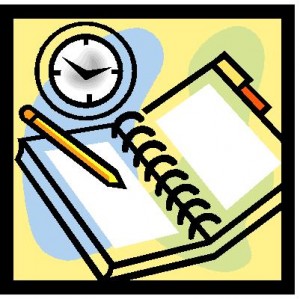3 Simple Ways to Combat the Long Pharmacy Wait Times
 What do you do in your pharmacy to keep the wait time down?
What do you do in your pharmacy to keep the wait time down?
While working at different IHS pharmacies, I’ve noticed a range of wait times and patience levels of patients.
I’ve worked at IHS/tribal pharmacies where the provider would instruct the patient to go to the pharmacy and their medications would be ready. Then the patient shows up and is disappointed that the wait time quoted by pharmacy staff is significantly longer. I’ve also worked at sites where patients have a lot of patience –they’re used to waiting a long time for their prescriptions. The pharmacists do their best to fill the prescriptions as soon as possible, and patients seem very understanding.
What can you do when you can’t help the long wait time because of staffing constraints? Increase patient satisfaction in one of these 3 simple ways:
 1. One way is give assurance that the pharmacy is working on their Rxs as quickly as possible. Instead of just having your staff tell people that the wait can be 1 hr long, for example, let them know “we are working on your prescriptions as quickly as we can. Although there is a bit of a line right now, when we receive it, we’ll start working on it right away.”
1. One way is give assurance that the pharmacy is working on their Rxs as quickly as possible. Instead of just having your staff tell people that the wait can be 1 hr long, for example, let them know “we are working on your prescriptions as quickly as we can. Although there is a bit of a line right now, when we receive it, we’ll start working on it right away.”
2. Something else your staff can do is let people know how the process works & invite them to come back later. For example, “the way it works is that the Dr. enters the prescription in after seeing you, then as soon as pharmacy receives the Rx, we process it. It may take 15 min after your visit before we receive the prescription to start working on it. Feel free to eat lunch & come back to pick up your Rxs.”
3.  A 3rd way to improve patient satisfaction is to help patients understand why it takes time to fill their prescriptions appropriately. It’s amazing how much we take for granted that we think people know what pharmacists do. Just try asking your next few patients whether they know what pharmacy does, and chances are that they will tell you we count pills.
A 3rd way to improve patient satisfaction is to help patients understand why it takes time to fill their prescriptions appropriately. It’s amazing how much we take for granted that we think people know what pharmacists do. Just try asking your next few patients whether they know what pharmacy does, and chances are that they will tell you we count pills.
One thing you can do is hand out a sheet of paper answering FAQs about the pharmacy & expectations while patients are either waiting to see their physicians or waiting to receive their prescriptions.
 What is one thing you will start implementing to improve patient satisfaction and decrease wait time for patients? Comment below and commit to the postive change.
What is one thing you will start implementing to improve patient satisfaction and decrease wait time for patients? Comment below and commit to the postive change.
Why Your Pharmacy Staff Doesn’t Communicate with You
 What do you think pharmacy staff polled across the country said about the common reasons they don’t bring their ideas to pharmacy management?
What do you think pharmacy staff polled across the country said about the common reasons they don’t bring their ideas to pharmacy management?
The top two so far are this:
1. “They don’t understand the workflow”.
2. Click here for reason #2
Here are a few quick tips on what to do differently for both scenarios:
1. “They don’t understand the workflow”:
As a pharmacy supervisor, spend some time on the line to understand how things work from the staff pharmacist’s perspective. Not only will this help you stay in touch with what your staff experiences, but you will also benefit from being able to come up with even better ideas to run the pharmacy well.
Have you seen the TV show “Undercover Boss”? If you haven’t seen that show before, these CEOs of large companies like Frontier Airlines go and work undercover as an employee for a day, so they can experience what their staff experiences. The CEO comes back with renewed appreciation for their staff and ideas they wouldn’t have thought about otherwise. Now, you may not work at a place big enough to be an Undercover Boss, so you will have to blow your cover and just work on the line with everyone knowing you are the boss.
 “Take this action” tip: Don’t just sit in your office all day. Your staff don’t get what you do in there, even if you do a lot. Come out once in awhile, work with them, and show that you still understand what they’re going through.
“Take this action” tip: Don’t just sit in your office all day. Your staff don’t get what you do in there, even if you do a lot. Come out once in awhile, work with them, and show that you still understand what they’re going through.
Take the time to ask your employees what areas they think could run a little smoother to show that you are actively interested in improving things and listening to ideas.
2. “They say it’s a great idea, but nothing happens”.
The problem with this may be twofold: either you feel it’s a great idea, but it doesn’t get implemented (due to the timing or due to other circumstances that don’t allow it to happen). Or you really don’t think it’s a great idea, but you tell them it’s a great idea just to make them feel good in the moment (even though you well know you won’t be using their idea).
If you plan to implement it:
If you want to implement an idea, but can’t right away, let your pharmacy staff member know that it’s something you plan on doing in a specific time frame. Or, if you need to look into things more before making a decision, have another conversation with them to let them know an update on the feasibility of implementing their ideas.
If you like it, but don’t plan on implementing it:
If you like a pharmacist (or tech’s) idea but aren’t able to implement it at all, have a follow-up a conversation with them and acknowledge their idea again. Show your appreciation for them wanting to help improve things in the pharmacy. Tell them why their idea wasn’t used, and ask them for additional ideas. This shows that you paid attention and also encourages further input.
If you don’t like it, and don’t plan on implementing it:
Tell them the truth. Hear them out first and acknowledge their idea. Tell them why it’s not able to be implemented in the big picture of things. But that you appreciate their idea. Ask them if they have another idea about how something else could be better…or if they have an alternative idea that could be used.
Where Every Pharmacist Wants to Work
 Wouldn’t it be nice if instead of having to wait for applications when you post a new pharmacist position, that you would already have a network of qualified pharmacists you could call? Could you imagine all the time you would save from having to sift through those piles of resumes and applications?
Wouldn’t it be nice if instead of having to wait for applications when you post a new pharmacist position, that you would already have a network of qualified pharmacists you could call? Could you imagine all the time you would save from having to sift through those piles of resumes and applications?
Be known as the place pharmacists want to work.
When I share new pharmacist job opening with pharmacists, they often ask me where it’s at. And sometimes they’ll tell me right away “I wouldn’t want to work there because they (the pharmacy director) tell you you’d be working one kind of schedule when you interview, and then they make you work other schedules once you’re hired. It’s like bait and switch.” Or the pharmacist I talk to would tell me “I like everything about the job, but not the schedule.”
 The biggest complaint pharmacists share with me about why they leave jobs is because of the schedule. The most common issue is being tired of a variable schedule, because it makes it hard for a pharmacist to plan their personal life. It’s harder to plan taking fun classes, organize rides for kids related to school activities, and coordinate time to hang out with a significant other more. Not knowing their schedule far in advance is another issue.
The biggest complaint pharmacists share with me about why they leave jobs is because of the schedule. The most common issue is being tired of a variable schedule, because it makes it hard for a pharmacist to plan their personal life. It’s harder to plan taking fun classes, organize rides for kids related to school activities, and coordinate time to hang out with a significant other more. Not knowing their schedule far in advance is another issue.
Tip #1: If you can make your pharmacists’ schedules more consistent and give them access as much in advance as possible, you will be known as an employer who has desirable shifts for their pharmacists. You will attract good pharmacists who are good at what they do, but have trouble balancing their life with the rotating & variable shifts in their current job.
Action step to implement: Think about what you can do about the schedule. One hospital pharmacy director saw his retention rates go up significantly when he added a 7 on/7 off staff pharmacist evening shift. The 7 on/7 off evening shift covers the less popular shifts of evening shift & weekend shifts. Plus, his pharmacists love having 7 on/7 off schedule without having to work nights. Contemplate this idea to see if it would help with pharmacist satisfaction at your pharmacy.
Tip #2: Be known as the #1 place pharmacists work at if they want professional growth.
 Many pharmacists love the opportunity to grow professionally. This doesn’t mean just clinically, but to develop as a person. Find out what your pharmacists’ strengths are, and foster growth in that area. It is a very individualized plan—it could be related to pharmacy management, clinical projects, coming up with ideas to improve workflow, patient care, or reducing time it takes to dispense medication, etc. Allow them the autonomy of taking on one project at a time. They could be small projects but important ones. They could also be part of a team in your pharmacy that brainstorms & implements that project together.
Many pharmacists love the opportunity to grow professionally. This doesn’t mean just clinically, but to develop as a person. Find out what your pharmacists’ strengths are, and foster growth in that area. It is a very individualized plan—it could be related to pharmacy management, clinical projects, coming up with ideas to improve workflow, patient care, or reducing time it takes to dispense medication, etc. Allow them the autonomy of taking on one project at a time. They could be small projects but important ones. They could also be part of a team in your pharmacy that brainstorms & implements that project together.
If you take the time to do this with each of your pharmacists, chances are that you will have pharmacists who stay with you year after year. You develop a relationship with your team and they feel you really care about them. Pharmacists who feel cared for will less likely leave their jobs, even if what seems like a better opportunity comes up.
Even while doing everything to be the best place to work, you may sometimes find yourself having an important job opening you want filled with the right pharmacist as soon as possible. Fortunately, you are in a better position than a pharmacy that doesn’t have as strong reputation than you. But you may still not have enough connections with the most experienced pharmacists to fill your opening. Don’t worry, because there are experienced and qualified pharmacists you can open yourself up to. Find out your options.
Action step to implement to become the place where every pharmacist wants to work: In your next staff meeting, share what your vision is about them growing professionally. Hand out a worksheet for them to fill out that helps them identify and acknowledge their strengths & what they are interested in doing more of professionally. Also during your staff meeting, ask your staff think could be done better about your pharmacy. Pick out the top 3 initiatives to work on in the next quarter.
The Word “But” – Communicating to Be Heard Corner

Ever hear a compliment, only to be let down when you hear the word “but”? “You’ve been doing a great job with counseling patients lately, BUT let us move more patients through the pharmacy faster.”
Before you hear anything else after “BUT”, you already anticipate to be let down by something negative. It’s what my friend & Communications Expert Kay White calls “The Great Eraser” in her #1 best-selling book “The A to Z of Being Understood: Make Your Voice Heard and Your Conversations Count”.
What if you could change the tone of what you’re about to say by making a simple switch?
Here are two simple tips I learned from Kay to overcome “The Great Eraser:”
 Tip #1: Changing “but” to “and”. A useful way to avoid the “but” trap is to replace it with ”and.” The word “and” works as a bridge, instead of breaking the sentence up and highlighting the negative.
Tip #1: Changing “but” to “and”. A useful way to avoid the “but” trap is to replace it with ”and.” The word “and” works as a bridge, instead of breaking the sentence up and highlighting the negative.
Example: “You’ve been doing a great job with counseling patients lately, and why don’t we move more patients through the pharmacy faster also.”
Tip #2: Flip It – Say the negative part first, and the positive part last. That way the comment is left on a positive note.
Example: We really need to move more patients through the pharmacy faster, but you’ve been doing a great job with counseling patients lately.
 Doing this will make a difference between being heard and having both points received vs. ending a conversation on a negative note. Start watching for The Great Eraser as you counsel patients, talk to co-workers or your pharmacy manager, or even think to yourself—I’ll bet you catch yourself doing it more often than you think.
Doing this will make a difference between being heard and having both points received vs. ending a conversation on a negative note. Start watching for The Great Eraser as you counsel patients, talk to co-workers or your pharmacy manager, or even think to yourself—I’ll bet you catch yourself doing it more often than you think.
It might take a while to get used to pausing before talking to avoid using the word “but,” BUT it is worth it because it will make a huge difference in your communication skills and help you to really be heard in the work place and in your personal life. Comment below on what you think of these tips, or how it’s going for you trying them out.
Frustrations Communicating with Your Pharmacy Staff
 Co-mmuni-cat-ion. Com-munic-at-ion. I started having a good look at my own communication issues recently when I was feeling frustrated with things falling through the cracks in my pharmacist recruiting business. Some things I envisioned being done a certain way ended up being done a different way. Recently, an email I sent to a team member about a request was interpreted in a different way than I intended & it got us both extremely frustrated. My communication challenges were driving me nuts. There’s nothing I hate more than things impacting the level of service that pharmacists need attention to with their job search.
Co-mmuni-cat-ion. Com-munic-at-ion. I started having a good look at my own communication issues recently when I was feeling frustrated with things falling through the cracks in my pharmacist recruiting business. Some things I envisioned being done a certain way ended up being done a different way. Recently, an email I sent to a team member about a request was interpreted in a different way than I intended & it got us both extremely frustrated. My communication challenges were driving me nuts. There’s nothing I hate more than things impacting the level of service that pharmacists need attention to with their job search.
I was determined to figure out how to solve the challenges I was having. Looking into it, I noticed that sometimes, things I clearly stated one way were being interpreted in another. Then there were times when things I unclearly said were unclearly getting interpreted (imagine that!). If I got lucky, sometimes people read my mind just fine.
I tried to figure out how I could solve the problem, and while doing so, I stayed up all night reading about communication one night. Here are some straight no BS tips I learned (and from my personal experiences) that you can use in your pharmacy/department:
1. Don’t be hard on yourself or on the other person when a communication breakdown happens and you’re frustrated. Realize that communication issues happen when the steps that contribute to communication are skipped. Also, people interpret you from their own “world”, and even if you communicate clearly and they seem to understand exactly as you said, there is still a chance for miscommunication to happen. Take a step back and evaluate what you may have contributed to the issue.
2. Communication = someone expressing themselves + someone interpreting that expression. Happiness for communicator= someone communicating + being understood the way they want. Happiness for recipient= Receiving what was being said + having the info with as little judgment as possible +a way to respond and express their understanding.
3.  No BS lessons/tips to make life easier: Read more
No BS lessons/tips to make life easier: Read more
Ready to Take Action & Turn Around Your Demotivated Pharmacy Staff?
 Last month, you learned the first 3 steps to improve productivity and increase your pharmacy staff’s motivation by taking a proactive approach to the situation. Now, read on for the second stage of the process, in which you prepare and present a plan to motivate your staff to the next level.
Last month, you learned the first 3 steps to improve productivity and increase your pharmacy staff’s motivation by taking a proactive approach to the situation. Now, read on for the second stage of the process, in which you prepare and present a plan to motivate your staff to the next level.
Step 4: Give each of your staff the opportunity of completing special projects within the pharmacy and give them creative freedom to introduce it into pharmacy. These can be patient-service related, clinical, or workflow-related. Allow your staff to have ways in which they may provide ongoing suggestions (ie, a suggestion box). Take time to discuss as a team the top ones to work on next, with the input of your vision. Give your staff the autonomy to be in charge of their project. Be amazed at your staff taking ownership and having pride in what they create. Give them a sense of purpose that motivates them to do their best every day.
Step 5: Make the most of your pharmacy technicians–give your techs ownership of an area that supports you. Ideas include taking P&T meeting minutes, organizing drug files (with you doing the aspects that require clinical knowledge), and answering all phone calls unless they escalate to requiring a pharmacist. For example, in many pharmacies, when a patient asks for a pharmacist, the phone immediately gets handed to a pharmacist. Instead, train your pharmacy support staff to ask what the person is calling about, so that if they can answer the question for them, they can do so. This helps you as the pharmacist or pharmacy manager make the best use of your time. You may train your support staff to say “so that I can give him/her [pharmacist] the heads up on what to help you with, would you let me know in a nutshell what you would like help with?”
Step 6: Inspect what you expect & acknowledge accomplishments. It’s cliché, but it rings true. Consistency of performance is impossible to maintain long-term when you don’t take the time to “inspect what you expect” & continue to inspire your staff.
Taking an active approach to turn around a demotivated staff reaps great rewards in productivity, employee satisfaction, and team cohesiveness. After implementing your unique plan, watch as your pharmacy staff grows on an individual and team level. As time goes on, be sure to not let the excitement of these new responsibilities wear off. Continue to encourage your pharmacists and techs to contribute in new, creative ways.
Motivating Your Pharmacy Staff Who Aren’t Performing to Their Potential
 Are you tired of figuring out a way to motivate your pharmacy staff who are underperforming, or who are visibly demotivated?
Are you tired of figuring out a way to motivate your pharmacy staff who are underperforming, or who are visibly demotivated?
What if you didn’t have to pull your hair out anymore, and could easily inspire your staff to exceed their potential?
You can improve productivity and increase your pharmacy staff’s motivation by taking a proactive approach to the situation. Create a more dynamic team with this two-tiered plan. First, set the tone for positive change and to decrease obstacles. Second, bring a plan to motivate your staff to the next level.
Here are some ideas you can implement now to achieve this:
Step 1: Share your vision for the pharmacy openly and frequently. Share your 1-mo, quaterly, annual, or 5-yr vision at staff meetings. Ask your staff what role they’d have an interest in playing with helping you reach your vision. In sharing your vision, share your specific goals as well. Instead of general goals such as “improve patient care” or “decrease wait time” give specific goals that are measurable, such as “decrease wait time by 20 min”.
Step 2: Provide clear channels of communication. Include regular time when your staff gets 1-on-1 time with you aside from performance reviews or team meetings. This time is best used to proactively encourage their growth as a pharmacist/tech, discuss challenges, and listen to the solutions they have to offer.
Clear communication when policy changes are made. When policy change are made, include your whole staff on those changes. This includes contract pharmacists who may not always attend your staff meetings. Provide them with an agenda that includes outcomes of those staff meetings and ask them to sign the agenda to acknowledge reading it.
Step 3: Set the stage for a more defined work flow by choosing structure over “wherever you’re needed”. Rather than letting your staff pharmacists & technicians choose where among the workflow to help out, have a structured workflow that lays out who is to do what when. Delegate responsibility that includes checklists (this can apply well to technicians). Some pharmacies allow pharmacists to float between screening & verifying/counseling without a set schedule.
The drawback to this is that some pharmacists may have a preference for one type of responsibility over another and engage primarily in that responsibility. This can create resentment among your staff, because those who may not be as assertive may end up feeling “stuck” doing responsibilities that the other staff doesn’t like to do.
Of course, instill the culture in your staff to help each other out when they’re backed up, but give your staff clear expectations of their roles.
Next month, we’ll introduce a plan for inspiring your pharmacists to want to perform at the next level.
7 Reference Questions You Wish You Asked Before Hiring a Pharmacist
Have you ever hired a pharmacist you got along with so well during the interview, only to wonder why you hadn’t seen it coming that your new hire would not work out as your employee?
Hindsight is always 20/20. But what if you could have as close to 20/20 before you hire someone? Take the emotional judgment out of your decision by using your intuition (NOTE: there is a distinction between intuition and emotion), assessing someone’s potential for future performance, and uncovering past behavior. This prevents you from just hiring someone you like, but who may not be a fit for the role. The decision factors mentioned above are the keys to a successful hire.
One method to uncover past behavior is asking the right reference questions. Not just generic standard reference questions, but insightful ones that help you make a sound decision. Don’t skip asking these insightful questions before you rush into hiring someone just because you’re short-handed.
Ask these 7 Reference Questions Before You Hire Your New Pharmacist:
- What did you find him/her to be naturally good at, or thrive on doing?
- Tell me about a time when a breakdown happened (ie, patient wasn’t getting served in the way you wanted; project wasn’t completed in a timely manner). What happened & what was the resolution?
- Under what kind of work environment do you think he/she would feel stifled in?
- Did he/she meet, exceed, or perform below your expectations?
- What advice do you have for managing him/her, and bringing out the best in him/her?
- What comes to mind first when you think of him/her–a starter, or a finisher?
- Would you have him/her work there again if the opportunity arose?
BONUS Reference Check Question:
If you were to hire XXX back and could create a position for XXX, what kind of a position would it be (ie, responsibilities)?
Comment below, or click the link to the right to share YOUR favorite reference questions. Contribute and you will receive a FREE Gift of” Top 20 Interview Questions to Ask“, so You Hire the Best Pharmacist NOT the Best Interviewer.
Pharmacist Retention Starts From Day One
 In the last article of this series, you recognized how important it is to set mutual expectations with your new hire, and to check in with them frequently, especially during the training period. This can save you from misunderstandings down the road, both in how you expect someone to perform actual functions and in the attitude or the pharmacy/clinic/hospital’s culture you’d like them to imbibe. It will ultimately lead to retention of happy employees. Studies show that one main reason why pharmacists leave their positions is because of management. Setting the tone for a strong relationship with your staff from the beginning is key to preventing that. Read on for more tips on setting expectations, how frequently to meet with your new hire, and questions to ask your new hire during the training period to set the stage for their retention.
In the last article of this series, you recognized how important it is to set mutual expectations with your new hire, and to check in with them frequently, especially during the training period. This can save you from misunderstandings down the road, both in how you expect someone to perform actual functions and in the attitude or the pharmacy/clinic/hospital’s culture you’d like them to imbibe. It will ultimately lead to retention of happy employees. Studies show that one main reason why pharmacists leave their positions is because of management. Setting the tone for a strong relationship with your staff from the beginning is key to preventing that. Read on for more tips on setting expectations, how frequently to meet with your new hire, and questions to ask your new hire during the training period to set the stage for their retention.
How frequently to meet with your new pharmacist hire:
Read more
When Pharmacy Management Doesn’t Listen
One frustration pharmacists express frequently when they are tired of their current job is that management doesn’t listen to their ideas. What challenges do you experience that keep you from bringing ideas to your supervisor?
 Here are quick tips on how to overcome challenges with your pharmacy supervisor not being receptive to your ideas:
Here are quick tips on how to overcome challenges with your pharmacy supervisor not being receptive to your ideas:
- STEP 1: Come up with a few solutions for the problem(s) you plan to bring up. This way, your supervisor does not see you as just a complainer, but a problem-solver.
- STEP 2: Talk about your suggestion from the perspective of what it would do for the pharmacy, pharmacy manager/director, or the rest of the pharmacy staff (or everyone who would be involved with the suggestion you’re making).
- STEP 3: Tell them how you are a part of the solution. Describe what your ideas are and what role you will play in the solution. Pharmacy supervisors/managers like it when you are not just making more work for them, but you will help them implement what you want to see.
 STEP 4: If you are turned down by your supervisor, ask him/her, “What are your hesitations about my suggestions?” “What additional information do you need to help you make a decision with this suggestion?” “What are the challenges you foresee with this suggestion?” “What other kinds of solutions do you suggest?” If you are certain your solution is the answer to the problem you are noticing/experiencing, tell your supervisor “maybe we can try it for awhile and I can help you test it. At the end of (agreed duration), you can evaluate it and decide if it makes sense”.
STEP 4: If you are turned down by your supervisor, ask him/her, “What are your hesitations about my suggestions?” “What additional information do you need to help you make a decision with this suggestion?” “What are the challenges you foresee with this suggestion?” “What other kinds of solutions do you suggest?” If you are certain your solution is the answer to the problem you are noticing/experiencing, tell your supervisor “maybe we can try it for awhile and I can help you test it. At the end of (agreed duration), you can evaluate it and decide if it makes sense”.
If your suggestion was still turned down by your pharmacy manager, keep in mind that you can ask again when you have more information to support your suggestion, or when the timing is different.
If your suggestion was accepted, go back to your supervisor with a progress report in a timely manner that is mutually discussed.
Read more on our blog on about how to overcome other pharmacy workplace challenges, including Gossiping and Backstabbing in the Pharmacy.